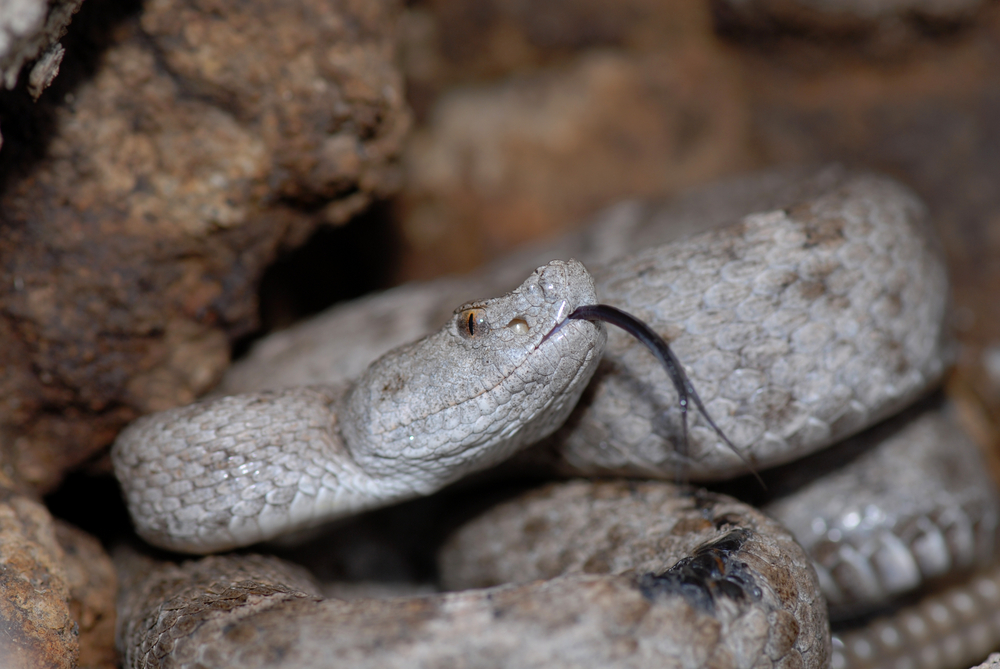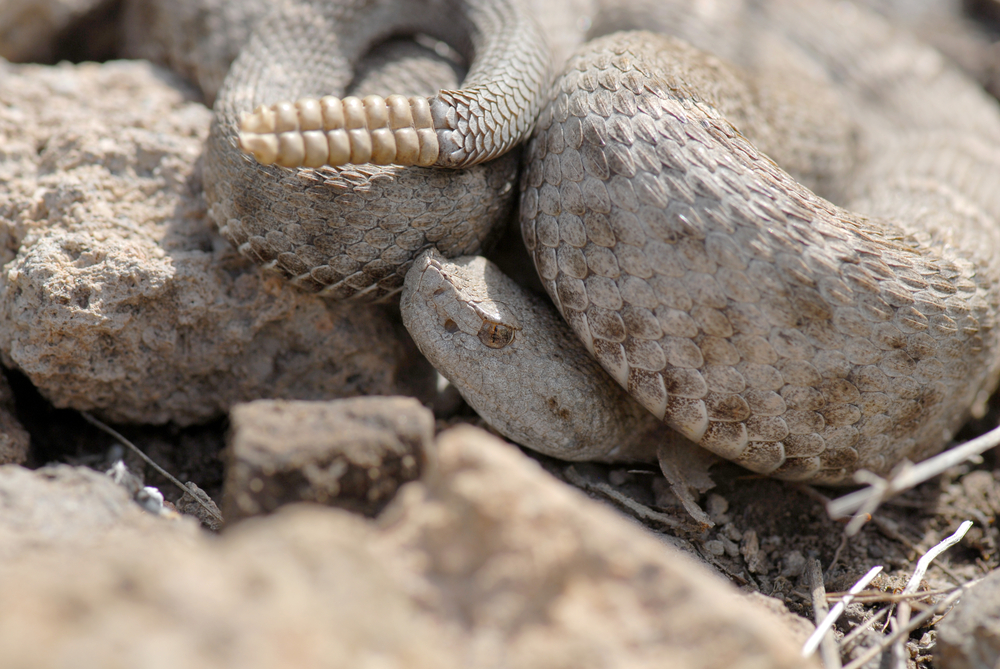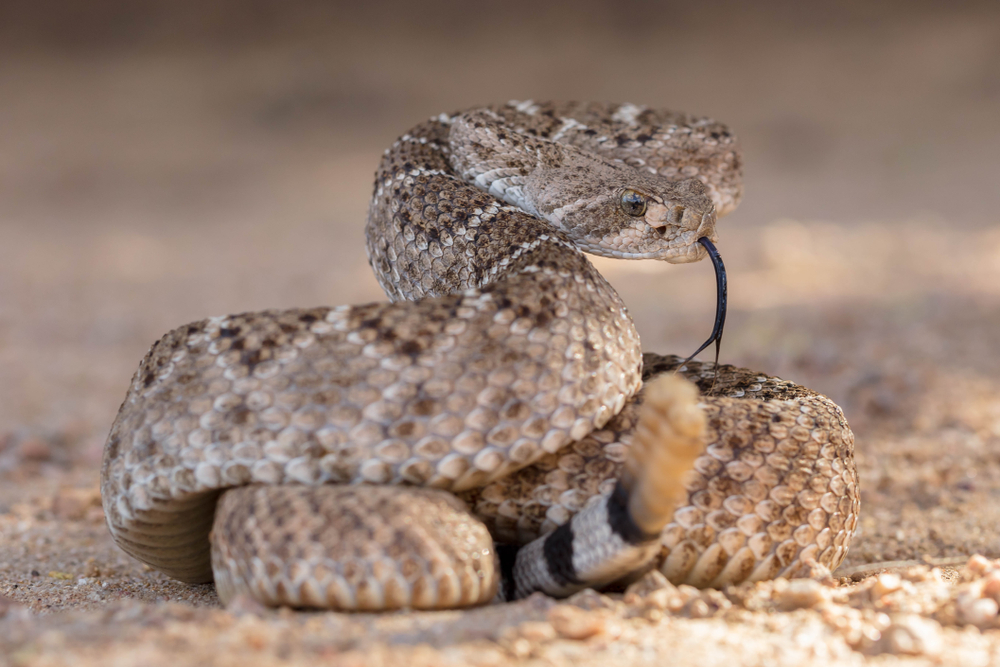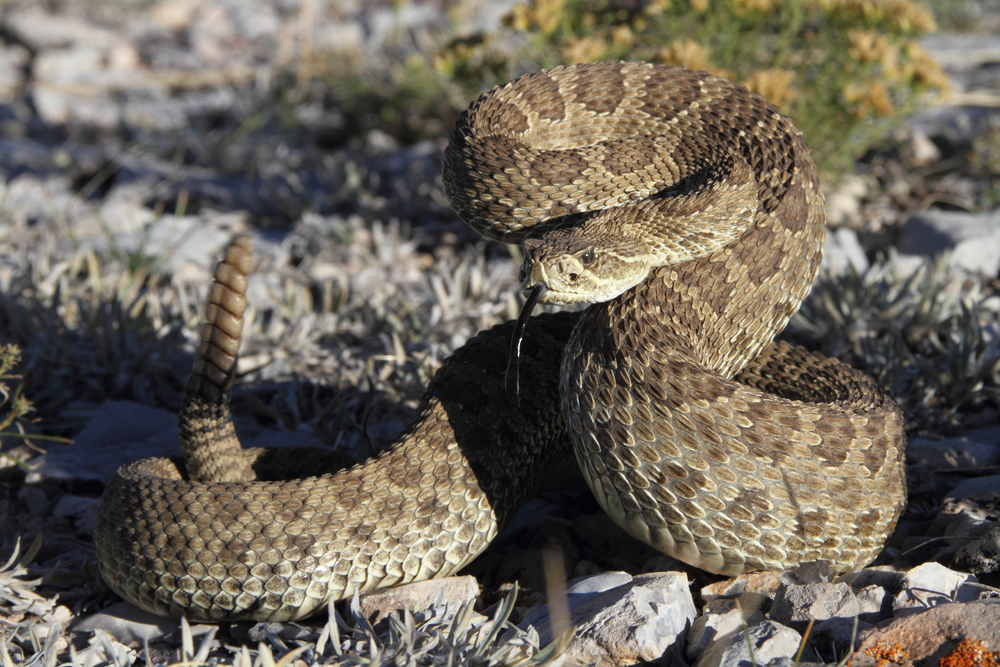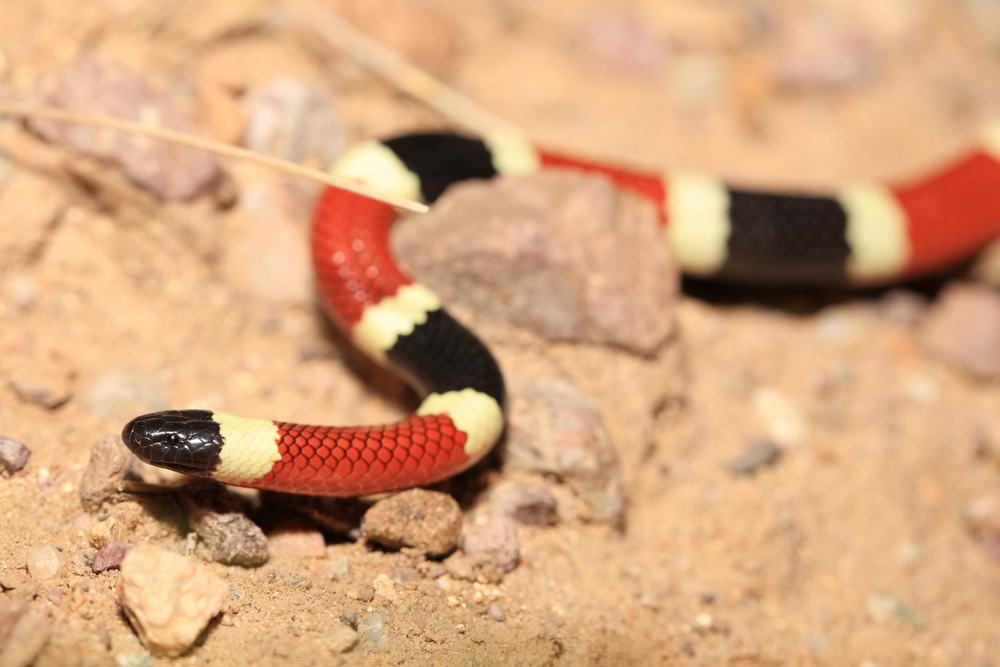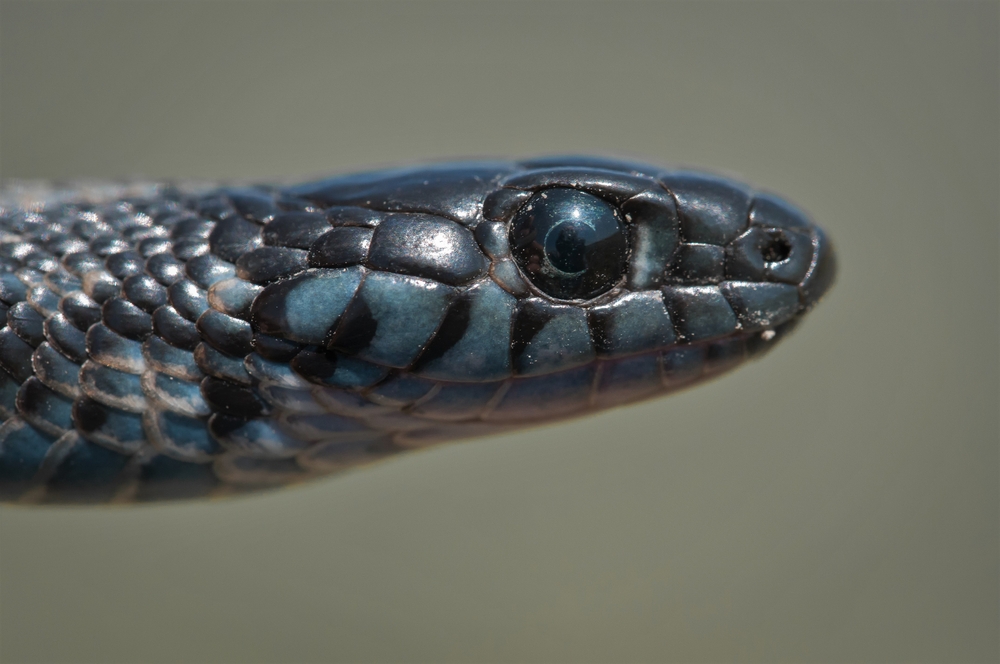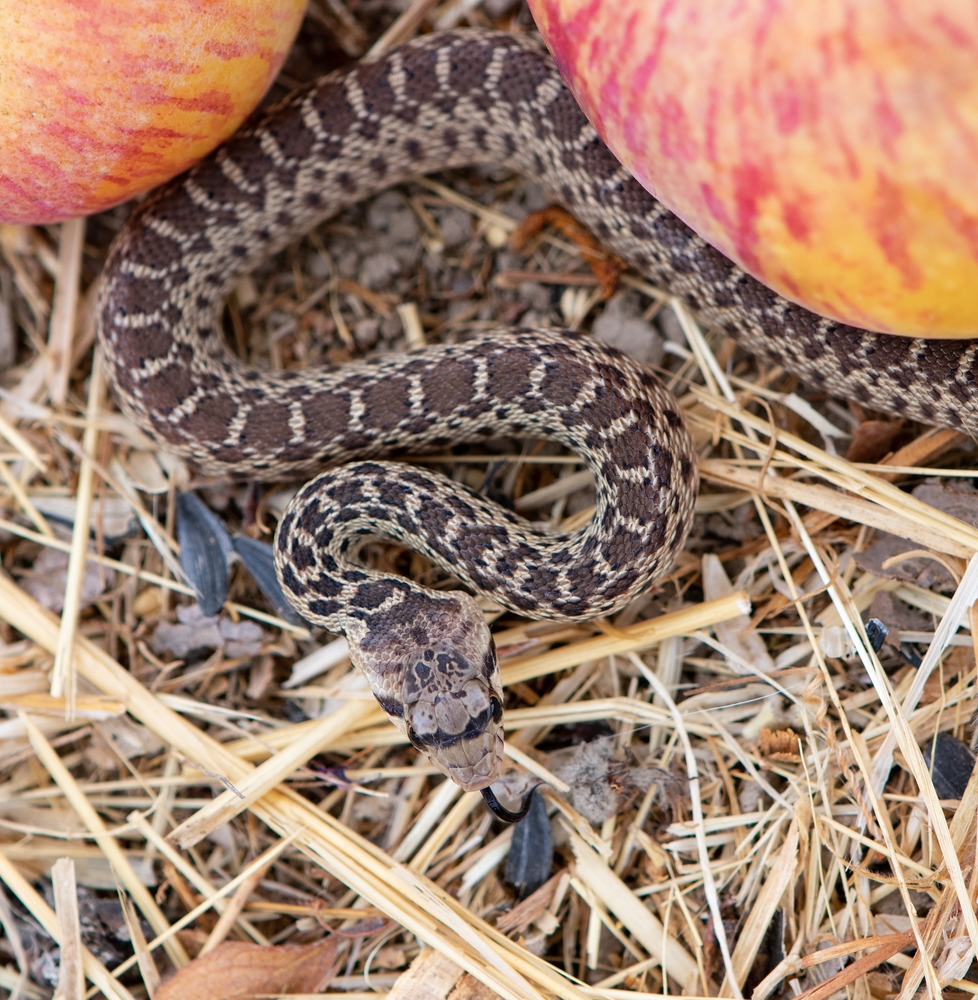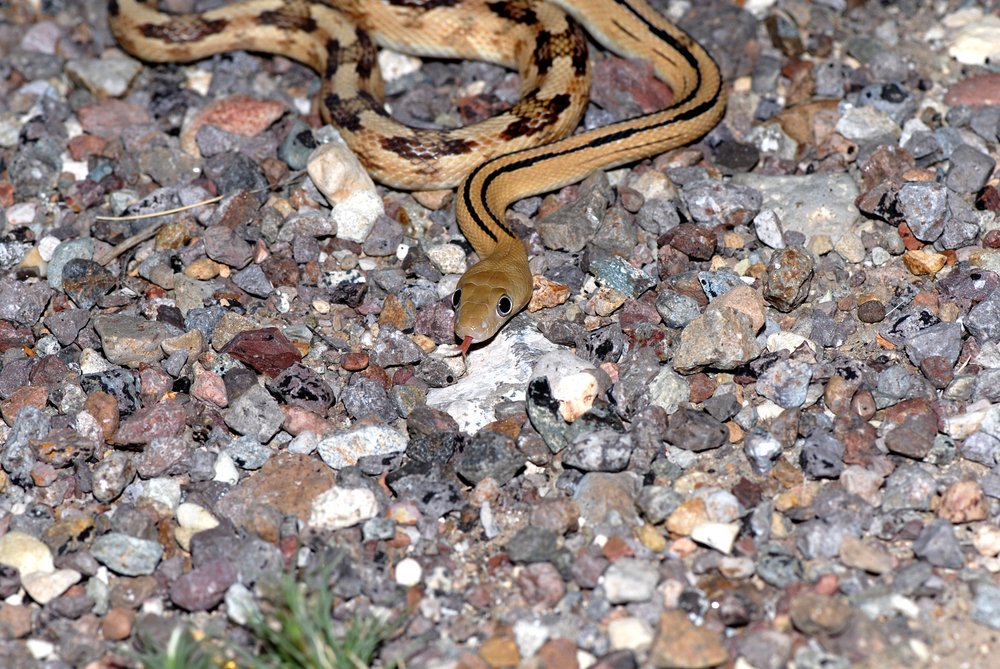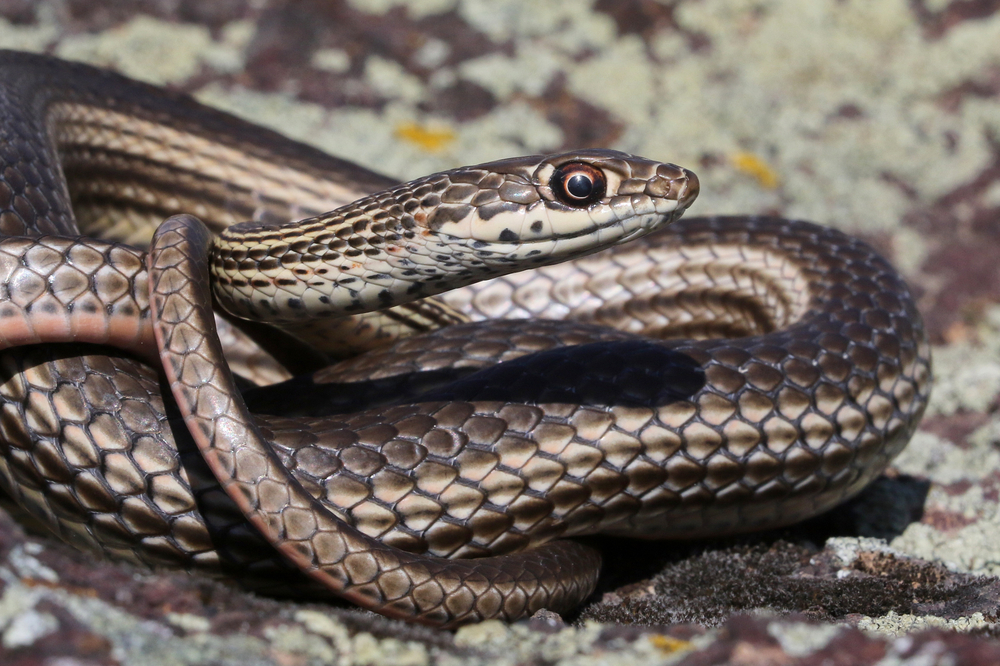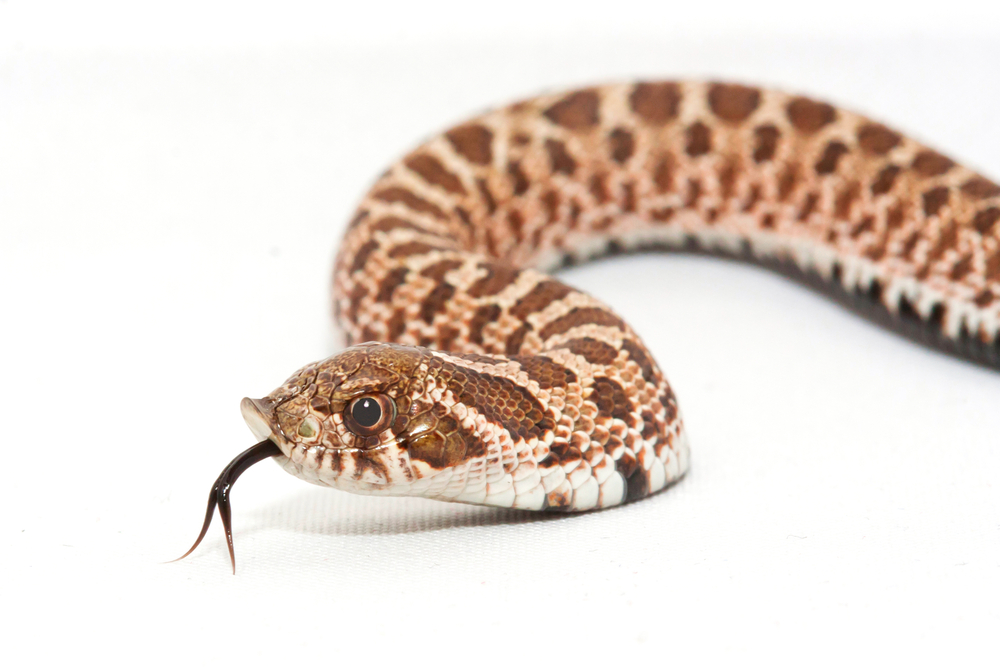There are many great reasons to visit New Mexico. It’s full of gorgeous desert landscapes and cave systems. Cities like Santa Fe and Albuquerque have museums, restaurants, and more. But there are also snakes in New Mexico.
Not all of them are actually dangerous. That isn’t to say that there aren’t a number of venomous snakes in New Mexico as well. There are certainly ones that can hurt or even kill you.
On the plus side, however, most snakes in New Mexico actually prefer to avoid humans. If you steer clear of them, they’ll likely do the same. But it’s important to be aware of what snakes are around, and what to do if you encounter one. Better safe than sorry!
The following is our guide to the various snakes in New Mexico, including how they look and act. We hope it’ll help you know what to keep an eye out for!
Snakes in New Mexico
There are around 46 snake species in New Mexico. This may sound like a lot (because it is!), but on the plus side, only 8 of them are poisonous. 7 of these are rattlesnakes, while the last is a coral. If you are bitten by any of these, seek medical help immediately!
Venomous Snakes in New Mexico
Here are some of the poisonous snakes in New Mexico, all but one of which you’re going to want to take care to avoid.
New Mexico Ridge Nosed Rattlesnake (Crotalus Willardi Obscurus)
On the plus side, despite its name, the New Mexico Ridge Nosed Rattlesnake is actually relatively rare to find. In fact, it’s only located in one area of New Mexico, Hidalgo County, situated in the state’s southwest.
These venomous snakes in New Mexico are overall gray in color. In addition, they have lighter colored crossbar shapes running over their backs. This pattern is quite distinctive and difficult to miss or confuse with a different species.
They get the “ridge nosed” part of their name from the raised ridges they have on their noses, or snouts.
One good aspect of the Ridge Nosed Rattlesnake is that they’re one of the shyer snakes in New Mexico. That means that they’re actually rather fearful of human beings, and even other animals. They’ll only go after the latter when they’re hunting.
Otherwise, they generally keep to themselves. They don’t even seek out confrontation, unlike some other venomous snakes in New Mexico. Therefore, if they’re not provoked, they’re unlikely to strike. If you see one, just back away and you’ll probably be fine.
Western Diamondback Rattlesnake (Crotalus Atrox)
One of the most dangerous of the poisonous snakes in New Mexico is the Western Diamondback Rattlesnake. They are the largest rattlesnakes in New Mexico, capable of growing longer than 4 feet!
On the plus side, these snakes in New Mexico aren’t likely to attack when they don’t feel provoked. They will more often try to avoid.
There are a number of colors that the Western Diamond back can be. You might find examples of these snakes in New Mexico that are gray, yellow, or brown.
What is more identifiable are the diamond shapes which run down their bodies. Also, on the end of their tails will be black rings and a rattle.
These venomous snakes in New Mexico are most often found out at night, especially during the hot seasons. When it’s cold out, however, you might sometimes find them sunning themselves on a rock in the morning.
During their mating season in the spring, they can be quite aggressive. So you should definitely keep an eye out for them that time of year!
Prairie Rattlesnake (Crotalus Viridis)
Next up we have the highly venomous Prairie Rattlesnake. Of all the snakes in New Mexico, it’s also the one you’re most likely to see. And if you do happen to encounter one, do your best to stay away, as they’re very deadly.
Prairie rattlesnakes come in a variety of different colors. They range from either brown or yellow to a yellow-brown combination of the two, and sometimes they’re even pink-colored. What color you find depends on where they live in New Mexico.
Luckily, they have other identifying features from other snakes in New Mexico. The most prevalent are the large dark spots running down their bodies, often with a light thin outline around each. They can also grow to a length of 64 inches, so they’re fairly noticable.
On the plus side, prairie rattlesnakes are nocturnal, so you’re not likely to cross paths with one in the day. At least during hot times of year. In cooler months, they’re sometimes out earlier, but as with other snakes in New Mexico, they usually avoid humans.
Sonoran Coral Snake (Micruroides euryxanthus euryxanthus)
Next we have the last of the snakes in New Mexico that are dangerous to people. As previously mentioned, it’s also the only one that’s not a rattlesnake.
The Sonoran Coral Snake is actually very small. At most they’re about 2 feet long. But that’s another reason you need to be careful. It’s extremely deadly despite its innocuous looking appearance.
This banded snake has alternating bands of color, which are often red, yellow, and black. The end of the tail tends to not be banded. Despite them looking pretty, if you see one, avoid immediately!
As with most snakes, the Sonoran Coral Snake hibernates during the cold months. So you don’t need to worry about encountering it in the winter at all. Additionally, as with many other snakes in New Mexico, they’re nocturnal.
They also similarly tend to avoid humans and even other animals when they’re not in hunting mode. Something to be aware of is they tend to live near water due to prey availability. So definitely keep an eye out when you’re in those areas.
Plains Black-Headed Snake (Tantilla nigriceps)
The last of the snakes in New Mexico on our venomous list actually don’t tend to be dangerous to humans at all. The Plains Black-Headed Snake only goes after small prey such as spiders and don’t have enough venom to kill a person. The Plains Black-Headed Snake is very small, and spotting one is very rare.
If you did happen to find one, you could recognize it by its black or dark brown head. The coloring almost looks like it’s wearing a face mask. This is where it gets its name from. Its scales are also so smooth they look wet or shiny. This is an optical illusion, however, as they don’t live in water.
Coloring-wise, they tend to be brown or tan with a red/pink or orange line running down their underside. They tend to live in bushes and scrub flatlands, but again, they’re afraid of humans and generally avoid them. So don’t bother them, but you have nothing to worry about if you do see one.
Recommended Reading
Are There Sharks in The Great Lakes? Find Out The Facts
Are There Sharks In The Mediterranean Sea? Shark Species and Habitat
Non Venomous Snakes in New Mexico
Here are some of the non poisonous snakes in New Mexico. You’re still going to want to leave them alone, but should you happen to encounter one, you have little to worry about.
Gopher Snake (Pituophis catenifer)
The Gopher Snake is actually one of the most prevalent of all the snakes in New Mexico. It can be found pretty much everywhere other than at very high elevations. They’re sometimes referred to as bull snakes, although technically that name is only for one specific sort of gopher snake.
For their own protection, Gopher Snakes are known for mimicking rattlesnakes. Therefore, they can look rather scary, but in actuality, they won’t attack you. With that said, it’s of course best to avoid in case you’re wrong and it actually is a rattlesnake.
Gopher Snakes are extremely long and can grow to over a whopping 7 feet! This makes them probably the longest of the snakes in New Mexico. They also tend to be tan, yellow, or red-brown in color, with dark brown or black spots around their bodies.
Gopher Snakes are actually usually quite gentle in nature. They only either get or seem dangerous when they feel under attack. This is when they act like rattlesnakes. Again, if you leave them alone, they’ll leave you alone.
Chihuahuan Night Snake (Hypsiglena jani)
The Chihuahuan Night Snake is another of the extremely common snakes in New Mexico. If you tend to come across one, it’ll probably be in a rocky area. They prefer these sorts of places to hide in, in order to avoid people and other potential dangers.
Chihuahuan Night Snakes are amongst the smallest snakes in New Mexico. Most are only around 12 inches, though they can reach 27.
Their coloring can very a great deal as it’s based on the color of the area, which helps them hide. Most often, they’ll be gray, tan, or cream. You can mainly identify them by their spots and very small length.
These non venomous snakes in New Mexico are mainly nocturnal. If you do happen to see one, it’s likely going after prey. They usually avoid loud noises, however, which includes people and large animals.
Be aware that, if they feel cornered, they can bite. With that said, they have no venom so won’t endanger your life. But it is pretty unpleasant, so just steer clear.
Desert Striped Whipsnake (Coluber taeniatus)
The Desert Striped Whipsnake is another one of the snakes in New Mexico that are all over the state. They may scare people due to how fast they move. Also they actually get their name based on how they seem to quickly whip around. They are non venomous, however, so won’t endanger you.
You can identify the Desert Striped Whipsnake by its distinctive stripe which runs down its back. It also tends to be brown in color (sometimes gray), and quite skinny. They have small heads and particularly round pupils. Their scales are smooth and shiny, and their underbellies often white or yellow.
Unlike the majority of the snakes in New Mexico, these snakes are actually very active in daytime. With that said, however, because they have no venom to protect them, they avoid people and other animals. This is, again, helped by how fast they are. If they see you, they’ll probably whip away.
They mainly eat frogs, mice, and other small creatures, and are only out in warm months. You have nothing to fear from them.
Plains Hog Nosed Snake (Heterodon nasicus)
The last of our non-venomous snakes in New Mexico, the Plains Hog Nosed Snake is also called the puff adder. They’re most commonly known by this name, and they can be found all throughout New Mexico’s wild areas.
These snakes can reach more than 2 feet, and are usually either gray or brown in color. On some occasions, they can be olive as well. It depends on where they live. They’re also known for having close-together splotches running down their lengths.
They also have fangs, but they aren’t in the front of their mouth as with venomous snakes in New Mexico. Instead, they’re in the backs.
You will want to avoid them because, when threatened, they can bite. And their bites are quite nasty. As they have no poison, though, they thankfully aren’t deadly.
These snakes tend to stay out of the sun. If you see them, it’ll likely be early in the morning or at sundown. They tend to eat small amphibians, eggs, and a number of small mammals. They’ll avoid you if possible, but again may bite if they feel provoked.
What To Do If You Encounter A Snake In New Mexico?
If you come across one of the snakes in New Mexico while camping or hiking, first of all, stay calm. Panicking can only make the situation worse. Next, assess. You may not have enough time to ascertain if the snake is poisonous or not. If you can’t, simply walk away either way.
Of course, getting yourself out of the situation is safest no matter what. It’s always possible you didn’t identify the snake correctly due to fear or adrenaline.
If you or someone else is bitten by one of the snakes in New Mexico, call an ambulance immediately. If possible, photograph the snake on your phone. That way, the EMTs will know what they’re dealing with when they arrive and whether it’s venomous.
If you’re bitten, limit your movements. When you move, it causes the blood to flow, which will make the poison spread through your system faster.
Recommended Reading
Are There Sharks in Puerto Rico? Where They Live & Species
Best Snorkeling in Mexico | Discover Mexico Like Never Before
Rio Dulce Guatemala Complete Guide To a Nature Holiday
Conclusion
Luckily, although there are certainly many venomous snakes in New Mexico, you aren’t likely to encounter them. You should be aware of the snakes in New Mexico, however, just in case.
If you do get bitten, call 911 immediately, and snap a shot of the snake. It could just save your life!
